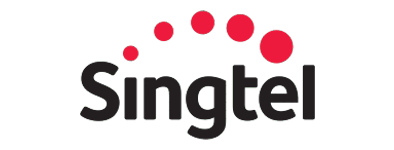RHCSA Certification Training Online
Get trained in Linux with experienced tutors and certified Red Hat trainers.
✅ 30 Days Intensive Training
✅ Beginner To Advanced Level
Authorised By Red Hat
WHO Should Take RHCSA (RH199) Certification Training
Companies Recruiting for Red Hat System Administrators
Top Recuriters





RHCSA Certification Training online Curriculum
RHCSA Course Content
Module 1
Access Systems and Obtaining Support
- Learn to access Red Hat Enterprise Linux systems.
- Edit text files directly from the shell prompt.
- Understand how to configure SSH key-based authentication for secure access.
- Get help and support through the Red Hat Customer Portal.
- Detect and resolve issues using Red Hat Insights.
Module 2
Manage Files from the Command Line
- Gain insights into the Linux file system hierarchy.
- Create links between files and directories.
- Master shell expansions to efficiently work with file names.
- Hands-on experience in managing files from the command line.
Module 3
Manage Local Users and Groups
- Understand user and group concepts
- Learn how to gain superuser access for administrative tasks
- Manage local user accounts and group accounts effectively
- Master the art of handling user passwords securely.
Module 4
Control Access to Files
- Learn to manage file system permissions
- Understand default permissions and file access
- Gain practical experience in controlling access to files
Testimonials
Hear from our students who’ve transformed their linux journey with Online RHCSA Certification Training . They share how our guidance and insights have made a tangible difference in their learning decisions and overall understanding of this linux course.
What Sets OSELabs Apart?
Join us and experience RHCSA training that goes beyond traditional learning. At OSELabs, we’re committed to delivering a dynamic and enriching journey.

Community-Driven Learning

Tailored Learning Pathways

Career Growth
Focused
For More Questions Contact: +91 94455 14242



Course Content
Got questions? We’ve got answers. Check out our frequently asked questions section for more details about the training, certification, payment, course structure, and what you can expect from your RHCSA Certification Training experience.
- Learn to access Red Hat Enterprise Linux systems.
- Edit text files directly from the shell prompt.
- Understand how to configure SSH key-based authentication for secure access.
- Get help and support through the Red Hat Customer Portal.
- Detect and resolve issues using Red Hat Insights.
- Gain insights into the Linux file system hierarchy.
- Create links between files and directories.
- Master shell expansions to efficiently work with file names.
- Hands-on experience in managing files from the command line.
- Understand user and group concepts.
- Learn how to gain superuser access for administrative tasks.
- Manage local user accounts and group accounts effectively.
- Master the art of handling user passwords securely.
- Learn to manage file system permissions.
- Understand default permissions and file access.
- Gain practical experience in controlling access to files.
- Explore SELinux (Security-Enhanced Linux) and change its enforcement mode.
- Control SELinux file contexts for security.
- Adjust SELinux policy using Booleans.
- Investigate and resolve SELinux issues efficiently.
- Learn to manage processes, including killing them.
- Monitor process activity for system optimization.
- Adjust tuning profiles for improved system performance.
- Gain insights into influencing process scheduling.
- Schedule recurring user and system jobs.
- Effectively manage temporary files.
- Take a quiz to test your knowledge.
- Summary of task scheduling and time management.
- Register systems for Red Hat support.
- Install and update software packages using DNF (Dandified Packaging Tool).
- Enable DNF software repositories for access to software updates.
- Hands-on lab exercises for software management.
- Understand how to mount and unmount file systems.
- Add partitions, file systems, and persistent mounts.
- Efficiently manage swap space for optimal system performance.
- Create and extend logical volumes for storage management.
- Explore layered storage concepts.
- Practical lab exercises on managing storage components.
- Identify automatically started system processes.
- Control system services for system management.
- Set the boot target for system startup.
- Handle root password reset and file system issues at boot.
- Describe system log architecture.
- Review syslog files and system journal entries.
- Learn how to preserve the system journal.
- Maintain accurate time for log management.
- Validate network configuration.
- Configure networking from the command line.
- Edit network configuration files effectively.
- Configure hostnames and name resolution.
- Manage network-attached storage using NFS (Network File System).
- Automount network-attached storage for seamless access.
- Hands-on lab exercises for working with network storage.
- Learn how to manage server firewalls for security.
- Hands-on lab exercises for network security management.
- Understand container concepts and their significance.
- Deploy containers for application isolation.
- Manage container storage and network resources.
- Learn to manage containers as system services.
- A comprehensive review of the course content.
- Labs covering boot issue fixing, file system and storage management, server security configuration, and container management.
Schedule a call with your mentor.
Call: +91 94455 14242
Email: oselabsin@gmail.com
